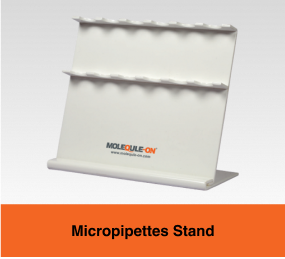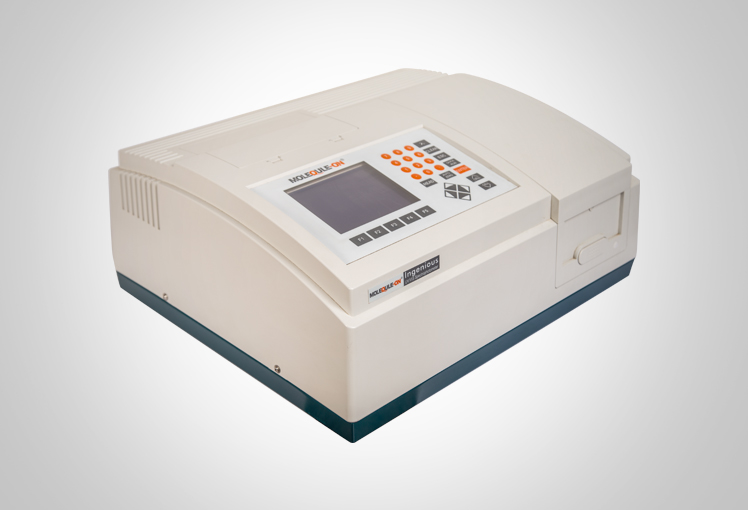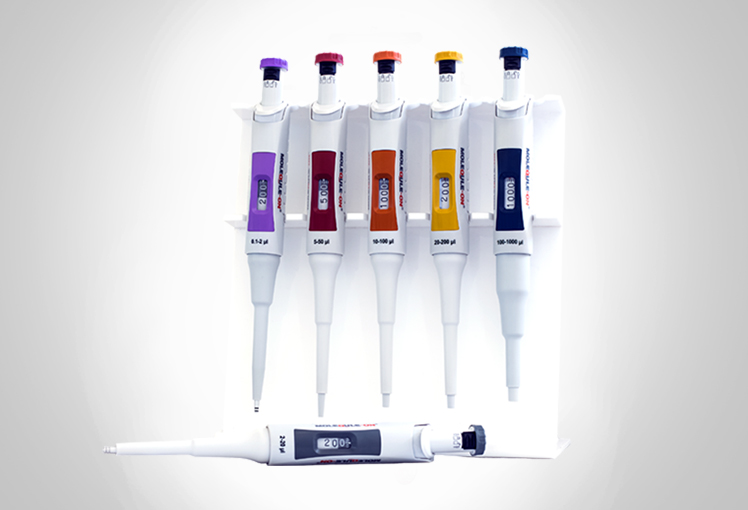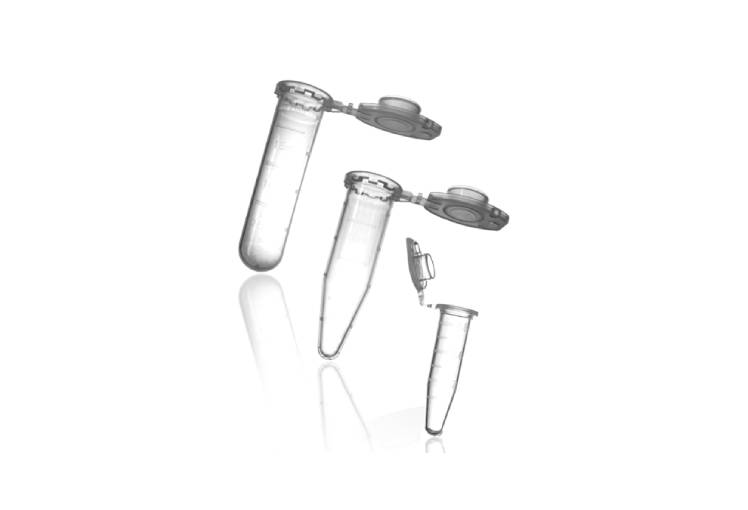MOLEQULE-ON reagents and kits are essential tool in research and various field of science, which enable accurate experiments and tests. Our products are integrated with newest technologies to meet the demand of a wide range of laboratories. The list includes PCR and qPCR reagents, electrophoresis, enzymes, nucleic acid extraction and purification kits, colorimetric and ELISA kits and buffers.
PCR reagents, dehydrated culture media and plasticware. Our company is focused on customer satisfaction striving to
gain the reputation of a reliable supplier of user-friendly laboratory tools.
-
MQ CCK – 8 Cell proliferation
and Cytotoxicity Assay Kit -
MQ Cell Growth Determination
Kit (MTT Assay Kit) -
MQ Mitochondrial Membrane
Potential Kit (JC – 10 Assay) -
MQ Calcein AMP/PI
Double Stain Kit
MQ CCK - 8 Cell proliferation and Cytotoxicity Assay Kit
Cell Counting Kit-8 (CCK-8) allows for very convenient assays using highly water-soluble tetrazolium salt. WST-8 [2- (2-methoxy-4-nitrophenyl) -3- (4-nitrophenyl) -5- (2,4-disulfophenyl) -2H- tetrazolium, monosodium salt] produces a water-soluble formazan dye upon reduction in the presence of an electron mediator. CCK-8 is a one-bottle solution; no premixing of components is required. As a non-radioactive option, CCK-8 enables sensitive colorimetric assays to determine the number of viable cells in cell proliferation and cytotoxicity assays. WST-8 is reduced by dehydrogenases in cells, yielding an orange-colored product (formazan), which is soluble in the tissue culture medium. The amount of formazan dye generated by dehydrogenases in cells is directly proportional to the number of living cells.
MQ Cell Growth Determination Kit (MTT Assay Kit)
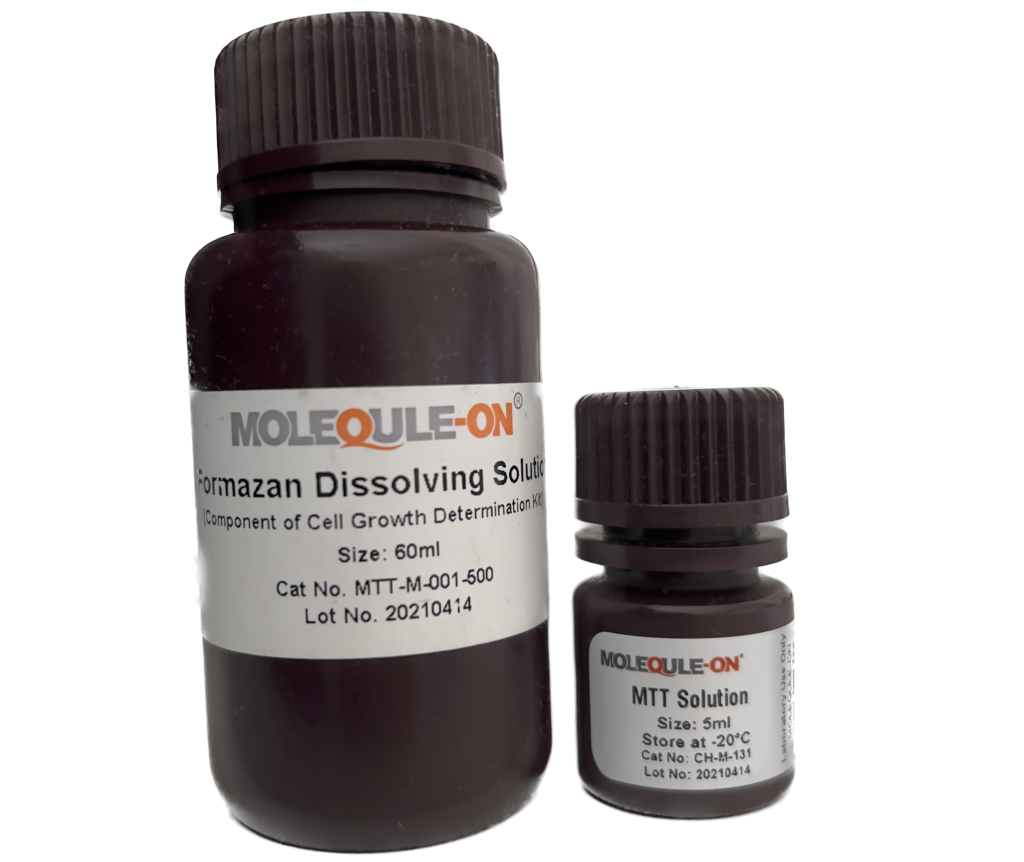
The kit is designed for the spectrophotometric measurement of cell growth based on mitochondrial activity in living cells. MTT measures the activity of living cells through mitochondrial dehydrogenase activity, offering a simple, accurate, and reproducible method. Dehydrogenases in mitochondria reduce MTT to a crystalline purple product, Formazan. These crystals can be dissolved in a specific solvent for measurement. Use a Microplate Absorbance Reader to measure absorbance at a wavelength near 490 nm. As cell numbers increase, more MTT Formazan is formed, leading to a corresponding increase in absorbance.
For
best
results,
cell
numbers
should
be
determined
during
log
growth
stage.
Each
test
should
include
a
blank
containing
complete
culture
medium
without
cells.
MQ Mitochondrial Membrane Potential Kit (JC-10 Assay)
JC-10 is a cationic dye that exhibits potential-dependent accumulation in mitochondria, indicated by a fluorescence emission shift from green (~525 nm) to red (~590 nm). Mitochondrial depolarization is reflected by a decrease in the red/green fluorescence intensity ratio. This potential-sensitive color shift is due to the concentration-dependent formation of red fluorescent J-aggregates.
JC-10 can be used as an indicator of mitochondrial potential in various cell types, including myocytes and neurons, as well as in intact tissues and isolated mitochondria. The use of fluorescence ratio detection allows researchers to make comparative measurements of membrane potential and determine the percentage of mitochondria within a population that respond to an applied stimulus, thus revealing subtle heterogeneity in cellular responses. JC-10 is most commonly used to detect mitochondrial depolarization in the early stages of apoptosis.
MQ Calcein AMP/PI Double Stain Kit
Calcein-AM is a cell-staining reagent used for fluorescent labeling of living cells, emitting green fluorescence
(Ex = 490 nm, Em = 515 nm). The addition of an acetomethoxymethyl ester (AM) group to traditional Calcein increases its hydrophobicity, allowing it to easily penetrate the membrane of living cells. Once inside the cell, Calcein - AM (which is not fluorescent on its own) is cleaved by intracellular esterases to form the nonpermeable polar molecule Calcein, which becomes trapped inside the cell and emits strong green fluorescence. Compared to other similar reagents like BCECF - AM and CFDA, Calcein-AM is the most suitable fluorescent probe for live cell staining due to its very low cytotoxicity and its lack of inhibition on cellular functions such as proliferation and lymphocyte chemotaxis.
Because
dead
cells
lack
esterase,
Calcein
-
AM
is
used
only
for
cell
viability
testing
and
short
-
term
labeling
of
living
cells.
Therefore,
Calcein
-
AM
is
often
used
in
combination
with
dead
cell
fluorescent
probes
such
as
propidium
iodide
(PI)
for
simultaneous
fluorescent
double
staining
of
live
and
dead
cells.
Propidium
iodide
(PI)
can
not
pass
through
the
cell
membrane
of
living
cells,
but
can
only
pass
through
the
disordered
region
of
the
dead
cell
membrane
to
reach
the
nucleus
and
embed
into
the
DNA
double
helix
of
the
cell
to
produce
red
fluorescence
(Ex=535 nm, Em=617 nm).
Therefore,
PI
only
stains
dead
cells.
Since
both
Calcein
and
PI - DNA
can
be
excited
by
490
nm,
both
live
and
dead
cells
can
be
visualized
by
fluorescence
microscopy.
However,
only
dead
cells
could
be
observed
with
545
nm
excitation.
The
working
principle
of
this
kit
is
to
double
dye
Calcein - AM
and
PI
to
double
stain
and
label
live
and
dead
cells,
so
as
to
analyze
the
level
of
live
and
dead
cells. According
to
our
optimized
experimental
system,
200 μl
cell
suspension
can
be
stained
for
500
times.
Lorem ipsum dolor sit amet, consectetur adipisicing elit. Optio, neque qui velit. Magni dolorum quidem ipsam eligendi, totam, facilis laudantium cum accusamus ullam voluptatibus commodi numquam, error, est. Ea, consequatur.
Lorem ipsum dolor sit amet, consectetur adipisicing elit. Optio, neque qui velit. Magni dolorum quidem ipsam eligendi, totam, facilis laudantium cum accusamus ullam voluptatibus commodi numquam, error, est. Ea, consequatur.
Lorem ipsum dolor sit amet, consectetur adipisicing elit. Optio, neque qui velit. Magni dolorum quidem ipsam eligendi, totam, facilis laudantium cum accusamus ullam voluptatibus commodi numquam, error, est. Ea, consequatur.
Lorem ipsum dolor sit amet, consectetur adipisicing elit. Optio, neque qui velit. Magni dolorum quidem ipsam eligendi, totam, facilis laudantium cum accusamus ullam voluptatibus commodi numquam, error, est. Ea, consequatur.



